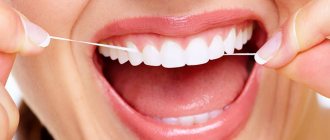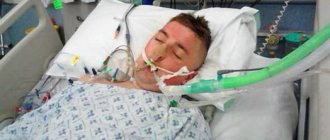Bad breath is a huge problem for many people who are forced to constantly “chew” it with chewing gum, use various fresheners and at the same time are still embarrassed to communicate normally. If you have to constantly "keep your distance" when talking, refuse spontaneous kisses (because you have to run to the bathroom first and brush your teeth immediately!) and spend a lot of money on fresheners, it may be easier to find the real cause of your bad breath and finally eliminate it ?
Causes
Why does my breath smell after tooth extraction? There are several factors that provoke the problem:
- Patient's disregard for doctor's recommendations. After tooth extraction, the dentist instructs the patient about the rules of behavior in the postoperative period. For speedy wound regeneration, it is necessary to refrain from consuming hot and cold foods for 24 hours, as well as from rinsing the mouth with antiseptic solutions. Also, you should not touch the hole with your hands, so as not to provoke the destruction of epithelial tissue.
- No blood clot. During complex operations, for example, after the removal of a wisdom tooth, dry socket syndrome is often observed due to a previous infection of the alveoli. Pathogenic flora prevents a clot from forming. Complications after surgery appear within a few days. Patients report throbbing pain and swelling of the cheek.
- The presence of chronic infectious diseases in the oral cavity. The presence of pathogenic flora increases the risk of wound infection after tooth extraction. For people with chronic dental diseases, extraction is prescribed in extreme cases due to the high risk of developing negative consequences.
Tip two: on the first day, refuse even mouth baths.
Many patients are worried that on the first day after surgery, doctors forbid them not only from brushing their teeth and actively rinsing, but even from using antiseptic mouth baths. They fear that inaction will lead to infection of the newly damaged tissue. However, you don't have to worry about this. After treatment, the doctor tampons the resulting hole with iodoform turunda (for example, Alvostaz), which then gradually resolves over 4-5 hours. The dressing has a local antiseptic, hemostatic, anti-inflammatory1, wound healing and even anesthetic effect.
The bandage has a local antiseptic and hemostatic effect
By the way, the iodine smell after tooth extraction and even a similar taste is just the norm when you have such a medicinal dressing on the wound. This is harmless, unless, of course, you are allergic to iodine, which your doctor should naturally ask about in advance. After a day, the smell and taste will completely disappear, because... the remedy will dissolve.
For the first 3-5 days, under no circumstances should you actively rinse your mouth with antiseptic solutions or herbal decoctions. Moreover, it is not even recommended to do mouth baths on the first day. All this can lead to damage, shifting or loss of the protective clot.
Starting from the second day after removal, you can perform oral baths. To do this, simply put an antiseptic in your mouth (Chlorhexidine, Miramistin, Furacilin), hold it for several minutes, then carefully spit it out. But you cannot use a soda-salt solution for this purpose - despite its excellent disinfecting properties, it can negatively affect the clot itself and the tissues surrounding it.
"Chlorophyllipt" can also be used for rinsing
Bad breath after wisdom tooth removal
Consequences after extraction appear due to the location of wisdom teeth and their massive roots. Due to inflammatory complications, an unpleasant taste appears in the mouth.
Other causes of the problem include the formation of a cyst at the site of the torn element. Due to a benign tumor, the body tries to separate healthy soft tissues from infected ones. Inside the cyst there is a serous fluid that gives off a bad odor. If not treated in a timely manner, a benign neoplasm transforms into a gumboil or breaks out.
People with diabetes often experience hematomas after wisdom tooth extraction. To eliminate the tumor, the doctor makes an incision in the soft tissues of the gums and installs a drainage in the surgical field.
Bad breath accompanies heavy bleeding, which occurs when the figure eight is removed. If the symptom persists for more than 4 hours, you should immediately contact a surgeon. If necessary, the doctor will close the wound with cosmetic sutures.
Bad breath after tooth extraction is the first sign of developing disorders. Only a dentist can identify the exact cause of the problem and find a way to eliminate it.
What problems can arise from wisdom teeth?
- Due to the fact that the tooth is located far in the dentition, it is difficult to properly clean it of plaque and food debris. As a result, caries occurs, and then quickly becomes complicated into pulpitis. Anyone who knows pulp pain will not confuse it with anything.
- Wisdom teeth often do not have enough space in the jaw, causing them to grow sideways or even towards the second molar (seven), permanently damaging it.
- Another complication is the formation of a cyst in the area of the erupting wisdom tooth. This cyst grows quite rapidly, which leads to rapid destruction of bone tissue. Its presence on an x-ray is an absolute indication for wisdom tooth removal.
- In the absence of space for eruption, the “figure eight” crowds and shifts adjacent teeth, causing them to become crowded and crooked in position. For this reason, the eruption of wisdom teeth can lead to treatment with braces or aligners even for a person with previously completely straight teeth.
- If the wisdom tooth has not fully erupted, but is partially hidden under the gingival (mucous) hood, pericoronitis (pericoronitis) occurs. This is the name for inflammation of the gums around an under-erupted wisdom tooth.
Symptoms to see a doctor immediately
Tooth extraction is considered a minor operation and complications may develop after it. They are most often observed in patients suffering from pathologies of the cardiovascular system.
If disturbing symptoms appear after the intervention, you should see a doctor. Even if no alarming signs are observed, you must visit the dentist 3-4 days after the intervention so that he can assess the condition of the socket and, if necessary, take a control X-ray of the jaw.
Hematoma after wisdom tooth removal
Signs for an urgent visit to the dental clinic:
- persistent discomfort, even after taking painkillers;
- increasing the intensity of pain in the problem area;
- the occurrence of allergic reactions to antibiotics prescribed after tooth extraction;
- the appearance of temperature;
- heavy bleeding 4 hours after extraction.
The sooner the necessary measures are taken, the sooner the soft gum tissue will heal. And in this case, a person has the opportunity to quickly install a prosthesis to fill the missing element of the series.
Symptoms of perforation of the maxillary sinus
How does perforation of the maxillary sinus manifest itself? There are specific symptoms when this happens.
Signs of perforation:
- Bleeding from the tooth socket with the inclusion of air bubbles. When you exhale through the nose, the number of bubbles will increase.
- With perforation, bleeding occurs not only from the tooth socket. It may come from the nasal passage, which is close to the sinus.
- The patient speaks “in his nose” or nasally.
- Then there is a feeling of free passage of air through the tooth socket.
- The patient sometimes notes distension and a feeling of heaviness in the middle third of the face on the affected side.
If the perforation was not recognized immediately and treatment was not carried out, then the symptoms of sinusitis are added to the previous clinic.
Sinusitis manifests itself:
- Body temperature rises.
- The feeling of fullness in the projection of the maxillary sinus intensifies.
- Nasal breathing is difficult.
- The nasal mucosa on the affected side is swollen.
- General weakness increases.
- Aching pain in the nasal region.
- Purulent discharge from the nasal passage on the side where the manipulation took place.
Getting rid of unpleasant odor
If you can’t visit a doctor within the next few days, you can try to remove bad breath on your own. The measures are aimed at reducing the spread of pathogenic flora in the mouth. Hygiene measures are carried out longer than the required time - 5-7 minutes instead of 3-4. Particular attention is paid to the interdental spaces, where the greatest amount of plaque accumulates. It is recommended to use brushes, irrigators or dental floss along with the brush and paste. Careful hygiene prevents the spread of infection deep into the soft tissues of the alveoli.
After each meal, the mouth should be rinsed with antiseptic solutions. This is necessary in order to prevent a foreign object from entering the wound. Solutions can be purchased at a pharmacy or prepared independently at home. Preference is given to herbal solutions or plain boiled water.
Alcohol tinctures are not used to rinse the mouth after tooth extraction, as they can cause burns to damaged tissues. Decoctions can be prepared from chamomile, calendula, mint or lemon balm
If a putrid odor appears from the mouth, it is recommended to stop consuming protein foods (meat, fish). Preference is given to fresh vegetables and fruits. After each snack, chew gum.
During hygiene procedures, the back of the tongue is also cleaned, since the vast majority of pathogenic microorganisms are concentrated on it. Before visiting a doctor, you can soak a cotton swab in an antiseptic composition and apply it to the problem area. In case of severe bleeding, a tampon with hydrogen peroxide is applied to the wound area. Lotions using novocaine or lidocaine help reduce the intensity of pain.
Medicinal solutions for rinsing
To prevent foul odor from the mouth after tooth extraction, the following antiseptic compositions should be used:
- Furacilin solution. Prepare the product yourself: dissolve 2 tablets of the drug in 1 glass of boiling water and leave until cool. The product has a powerful anti-inflammatory and antiseptic effect. Furacilin is recommended for purulent complications and severe inflammation of the gums.
- Chlorhexidine solution. Prevents the development of purulent lesions.
- Miramistin. It eliminates bad breath well and prevents the formation of pus in the socket.
Rinse your mouth carefully so as not to wash the clot out of the hole. It is advisable to simply hold the antiseptic solution over the problem area. Measures to treat the oral cavity are carried out 24-48 hours after extraction. At least 6 hours must pass between procedures. Avoid rinsing your mouth if there is a cotton swab soaked in an antiseptic in the hole. You should also not remove the tampon yourself.
When providing emergency care, it is important to remember that some home procedures can be hazardous to health. Many patients rush to use saline or soda solutions after tooth extraction. Doctors speak out against the use of such drugs. The components disinfect the hole well, but also contribute to the destruction of the clot. Illiterate self-medication can only aggravate the situation. The well should not be touched after removing the element, even if the clot is dark in color and has a bad smell.
Traditional medicine is used in combination with medications. List of effective recipes to eliminate bad breath from the mouth:
- Sage decoction and oak bark: 2 tbsp. l. of herbal ingredients, pour 200 ml of boiling water and leave until cool. Use hot solutions to treat the mouth. Warming up stimulates the activity of pathogenic bacteria.
- Fresh leaves of golden mustache. The leaf of the plant is crushed until the juice appears and diluted in a 1:1 ratio with boiled water. The medicine is used twice a day after tooth extraction.
- Eucalyptus. It not only freshens breath, but also reduces the intensity of inflammatory processes.
If no results are observed from home treatment within 2-3 days, then you should urgently consult a doctor. Do not forget that emergency measures are considered only as temporary methods for eliminating unpleasant signs after tooth extraction.
Types of alveolitis:
- Serous;
- Purulent;
- Purulent chronic type.
With the serous version, the patient suffers from aching pain, which noticeably intensifies during meals. Body temperature does not increase, and general health is within normal limits. There is no blood clot in the hole where the tooth was removed. Leftover food accumulates there. This form of the disease develops within 3 days after surgery. If treatment is not started immediately, complications will arise.
Purulent alveolitis after tooth extraction is characterized by severe pain. An unpleasant odor appears from the oral cavity. Body temperature rises to 38 degrees. A person feels depressed, tired, lethargic. The skin becomes pale. The pain intensifies while eating food. Possible swelling of the facial muscles and enlarged lymph nodes. Palpation causes pain.
The chronic form of the disease implies periodic stabilization of the condition. Overgrowth of soft tissue occurs. Pus forms in the hole after surgery. A bluish tint may be observed.
Complications
If you do not take measures to disinfect the hole in a timely manner, you may encounter a number of unpleasant consequences.
Among the dangerous complications it should be noted:
- Inflammatory process in the tissues of the periosteum. The disease is accompanied by severe pain in the jaw and swelling of the gums. The intensity of discomfort increases at night and when a person eats. The inflammation gradually spreads to the neck, lips and chin. Advanced stages of the disease occur with fever, headaches and the formation of white plaque in the alveoli. The pathology is eliminated by washing the wound with antiseptic solutions and taking antibiotics.
- Alveolitis. It may be asymptomatic, but most often manifests itself as pain. At first the symptom is aching in nature, and then pulsating and constant. More often, the disease manifests itself after the removal of a wisdom tooth. Another sign of a problem is bad breath. Over time, it becomes difficult for the patient to open his mouth, and severe redness is observed in the gum area. Therapy is carried out using anti-inflammatory medications and drugs with antibacterial effects.
- Abscess. A complication occurs if the soft tissues of the mouth are injured during tooth extraction. Purulent processes develop in the area of the injuries received. The situation is aggravated if the patient does not comply with postoperative recommendations.
Osteomyelitis is one of the dangerous complications of tooth extraction
Causes of swelling after removal
Swelling of the mucous membrane in the area of removal in the gum area, as well as swelling of the cheeks, are also considered normal after wisdom tooth extraction. This is explained by tissue injury and the body’s natural reaction to the procedure. Normally, swelling increases the next day after visiting a dental surgeon, but then, if all recommendations are followed, it should subside.
If the swelling continues to increase, you should consult a doctor. The same applies to situations where, in addition to tissue swelling, there is increased pain, discharge from the socket, and increased body temperature. The listed signs indicate inflammation, which requires initiation of treatment.
The signs will be especially pronounced if there was already purulent inflammation at the time of visiting the dentist. In this case, even a correctly performed procedure, creating an outflow of inflammatory exudate, does not exclude an increase in tissue edema. When removing the upper tooth, swelling may spread to the orbital area. During surgery on the third molar of the mandible, swelling may extend to the neck and ear area. If after a day the symptom becomes less pronounced, we can assume that there are no complications.
In addition to increased swelling and pain, the following signs will be an indication for an emergency visit to the dentist:
- Discharge of pus from the socket.
- Bleeding.
- Pain when swallowing.
- Pain when trying to open your mouth.
- Swelling of the face, accompanied by redness of the skin.
It is unlikely that tissue swelling will be completely avoided, but the risk of complications can be reduced. It is enough to follow the doctor’s instructions, take prescribed medications and monitor oral hygiene.
Prevention
To prevent halitosis and other unpleasant symptoms from occurring a few days after tooth removal, you need to adhere to a number of rules:
- Apply a cotton swab to the wound if there is excessive bleeding.
- Avoid rinsing your mouth in the first days after the intervention.
- Take a pain reliever if the discomfort is unbearable.
- Do not smoke or drink alcohol for 3-4 days. Bad habits contribute to the destruction of the blood clot.
- After 2 days, treat your mouth with antiseptic compounds recommended by your dentist.
- Relieve swelling of the cheeks and gums with cold compresses.
Halitosis after tooth extraction is the first sign of a developing infectious lesion of the soft tissues of the mouth. If it is not possible to go to the clinic, then emergency measures must be taken at home, which include antiseptic treatment and compliance with postoperative rules.
Is it possible to fight the unpleasant odor from under the crown?
Since the unpleasant smell is caused by rotting processes, while they continue, it is impossible to get rid of the smell. You can only reduce it a little during treatment. They can help:
- Mouth rinses. To do this, you can use special antiseptic solutions that your doctor will recommend. Decoctions of medicinal herbs, such as chamomile or oak, are also suitable.
- Professional hygiene. The denture must be removed and cleaned. If the crown was installed to treat partial edentia, we recommend professional cleaning.
- Careful daily oral hygiene. In addition to a toothbrush and toothpaste, you can use special devices. You can completely clean the oral cavity, including in hard-to-reach places, using an irrigator. The device delivers a stream of air under pressure, which completely cleans out any remaining food. To care for crowns and implants, special brushes are used - interproximal, beam. You can clean the spaces between teeth using floss and floss.










